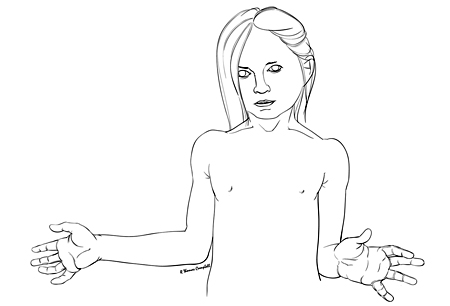Summary
Definition
History and exam
Key diagnostic factors
- paralysis of an arm
- observed decreased motion of an arm
- abnormal posture of the arm
Other diagnostic factors
- crepitance of clavicle or humerus
- Horner's syndrome
- tachypnoea, respiratory distress, feeding difficulties, failure to thrive
- lack of full range of passive movement
- hyper-reflexia, persistent primitive reflexes, abnormal muscle tone, or abnormal body posture
Risk factors
- shoulder dystocia
- large fetal size (>4000 g)
- maternal diabetes (especially type 1) or gestational diabetes mellitus
- maternal obesity
- breech presentation
- atypical second phase of labour
- assisted delivery
Diagnostic investigations
1st investigations to order
- clinical diagnosis
- x-ray of chest and affected upper extremity
Investigations to consider
- ultrasound scan of the shoulder
- MRI/MRI myelogram
- CT/CT myelogram
- EMG/nerve conduction studies
Emerging tests
- three-dimensional proton-density MRI to assess the brachial plexus
- volumetric MRI and EMG assessment of rotator cuff muscles
- ultrasound evaluation of the brachial plexus
Treatment algorithm
newborns and infants
following initial treatment
Contributors
Authors
Mark J. Adamczyk, MD
Co-Director
Brachial Plexus Treatment Center
Vice-Chairman
Department of Pediatric Orthopedic Surgery
Akron Children's Hospital
Akron
OH
Disclosures
MJA declares that he has no competing interests.
Stephanie A. Russo, MD, PhD
Co-Director
Brachial Plexus Treatment Center
Pediatric Hand and Peripheral Nerve Surgery
Akron Children’s Hospital
Akron
OH
Disclosures
SAR declares that she has no competing interests.
Peer reviewers
Whitney E. Muhlestein, MD
Peripheral Nerve Fellow
University of Michigan
Ann Arbor
MI
Disclosures
WEM declares that she has no competing interests.
Tim Hems, MA, DM, FRCS(Eng), FRCSEd(Orth)
Consultant Hand and Orthopaedic Surgeon
Queen Elizabeth University Hospital
Glasgow
UK
Disclosures
TH declares that he has written a number of publications over the last few years which highlight the lack of evidence that nerve repair surgery improves outcome in brachial plexus birth palsy.
Peer reviewer acknowledgements
BMJ Best Practice topics are updated on a rolling basis in line with developments in evidence and guidance. The peer reviewers listed here have reviewed the content at least once during the history of the topic.
Disclosures
Peer reviewer affiliations and disclosures pertain to the time of the review.
References
Key articles
American College of Obstetricians and Gynecologists. Neonatal brachial plexus injury. 2014 [internet publication].Full text
Royal College of Obstetricians and Gynaecologists. Shoulder dystocia: green-top guideline no 42. March 2012 [internet publication].Full text
Smith BW, Daunter AK, Yang LJ, et al. An update on the management of neonatal brachial plexus palsy-replacing old paradigms: a review. JAMA Pediatr. 2018 Jun 1;172(6):585-91. Abstract
Vuillermin C, Bauer AS. Boston Children's Hospital approach to brachial plexus birth palsy. J Pediatr Orthop B. 2016 Jul;25(4):296-304. Abstract
Pondaag W, Malessy MJA. Evidence that nerve surgery improves functional outcome for obstetric brachial plexus injury. J Hand Surg Eur Vol. 2021 Mar;46(3):229-36.Full text Abstract
Reference articles
A full list of sources referenced in this topic is available to users with access to all of BMJ Best Practice.

Differentials
- Clavicle or humeral fracture
- Septic arthritis of the shoulder or proximal humeral osteomyelitis
- Spinal cord or brachial plexus tumour
More DifferentialsGuidelines
- The evaluation and management of neonatal brachial plexus palsy
- ACOG neonatal brachial plexus palsy: task force report
More GuidelinesLog in or subscribe to access all of BMJ Best Practice
Use of this content is subject to our disclaimer